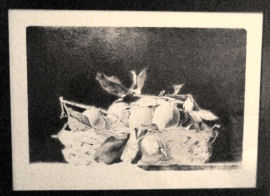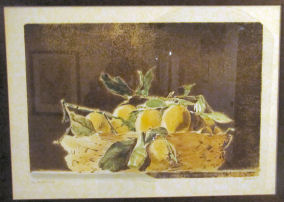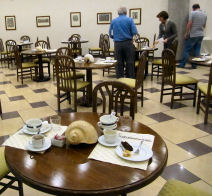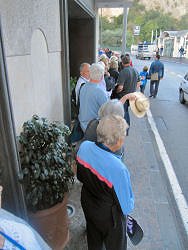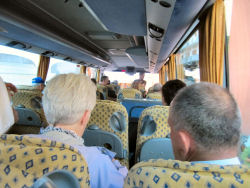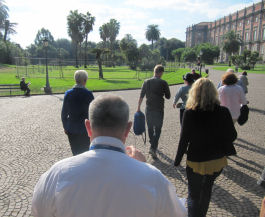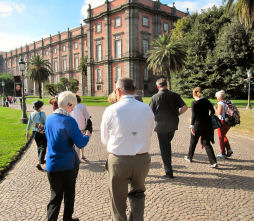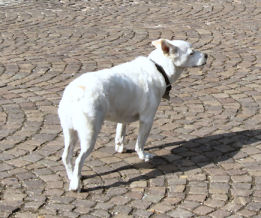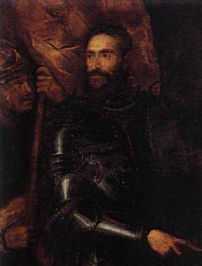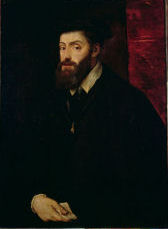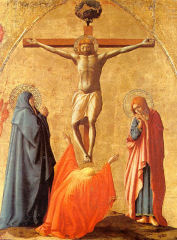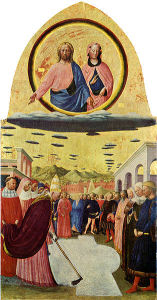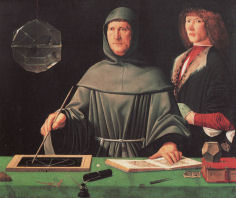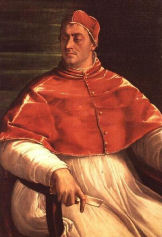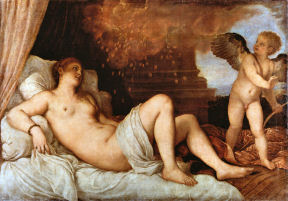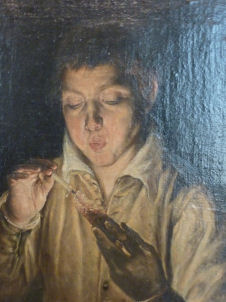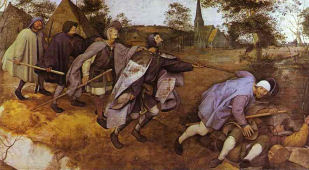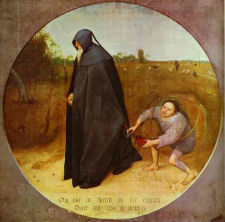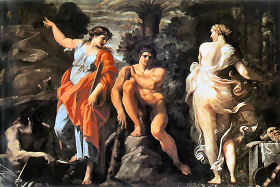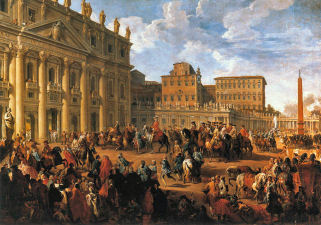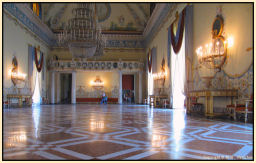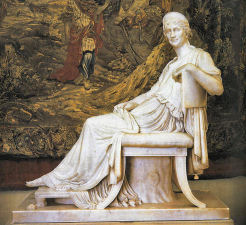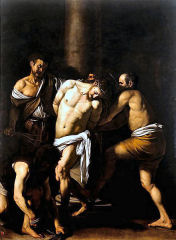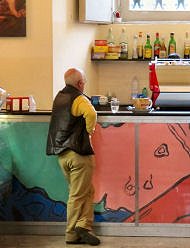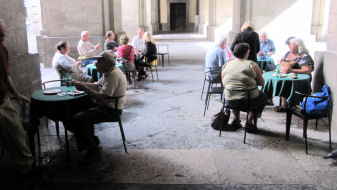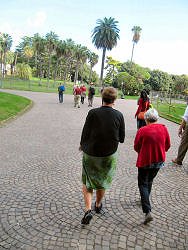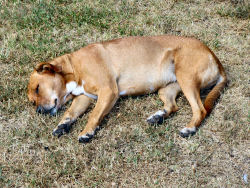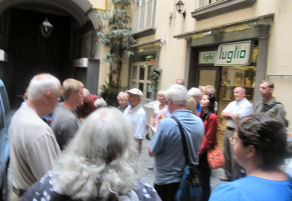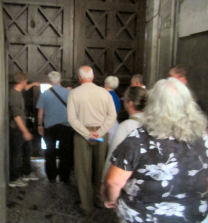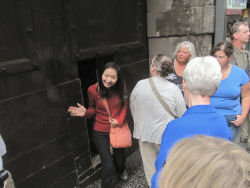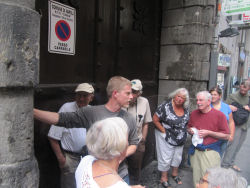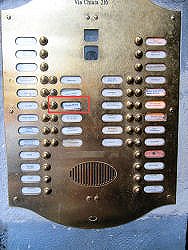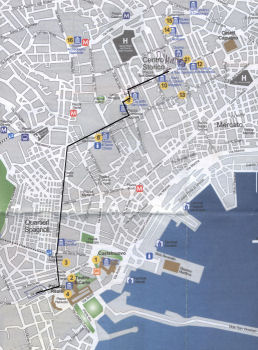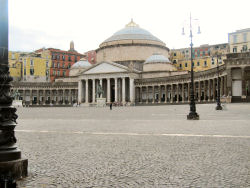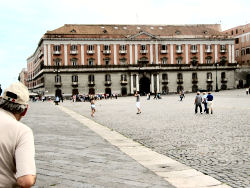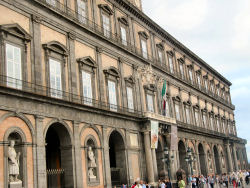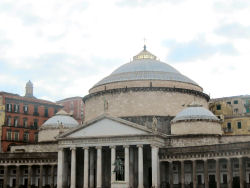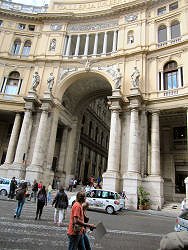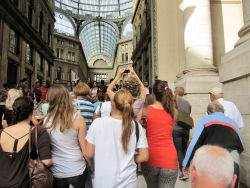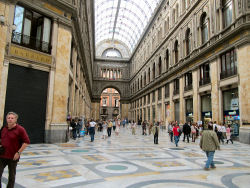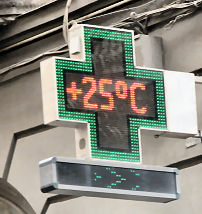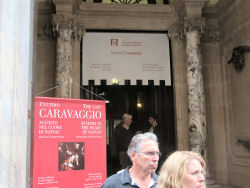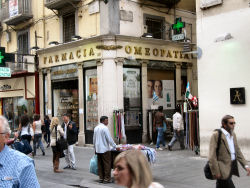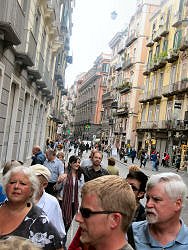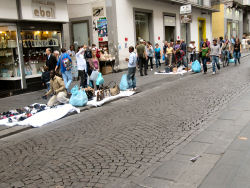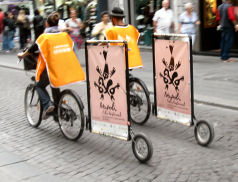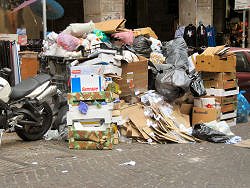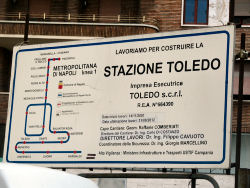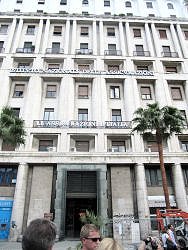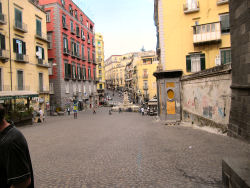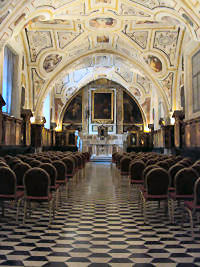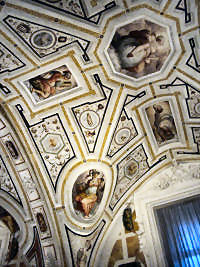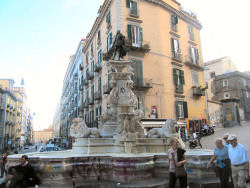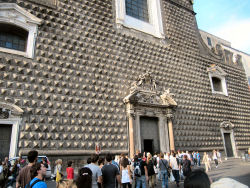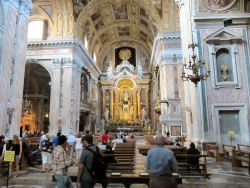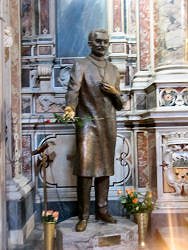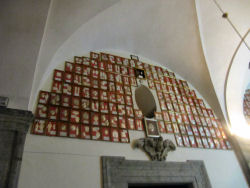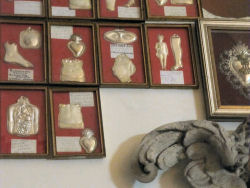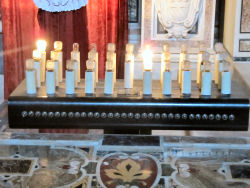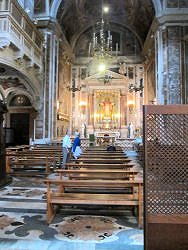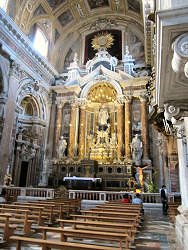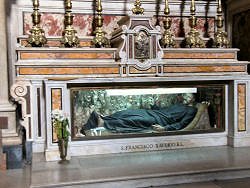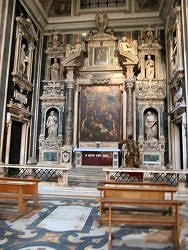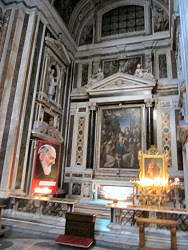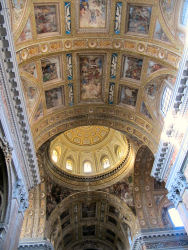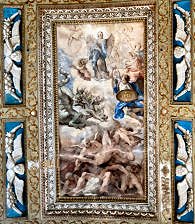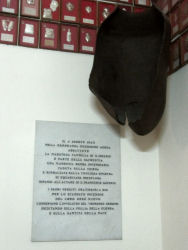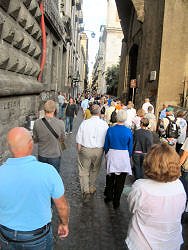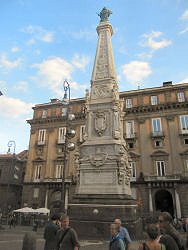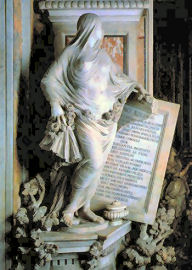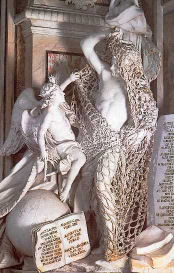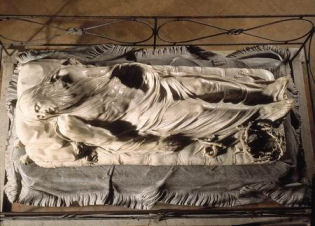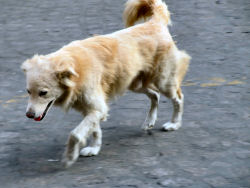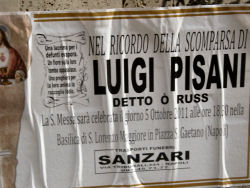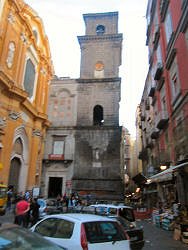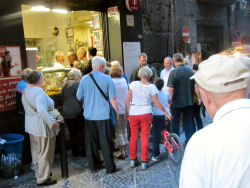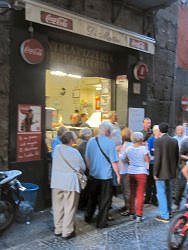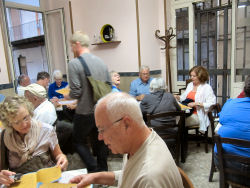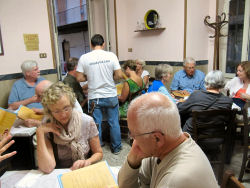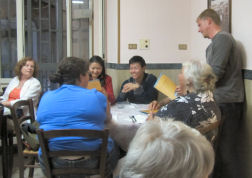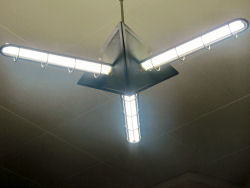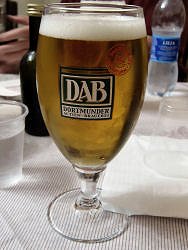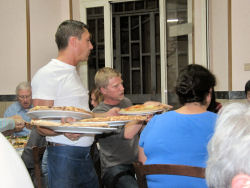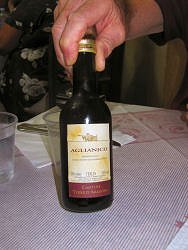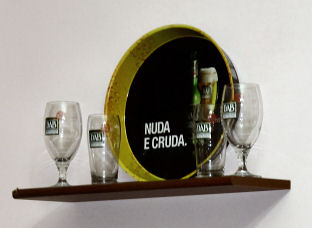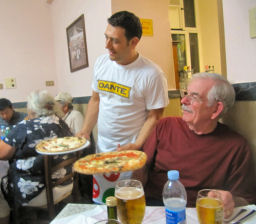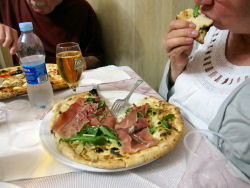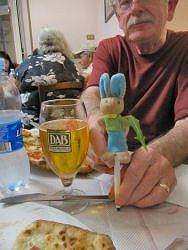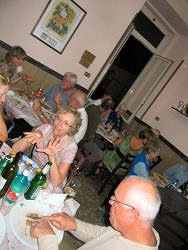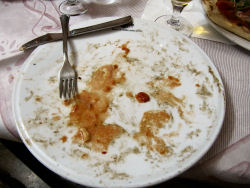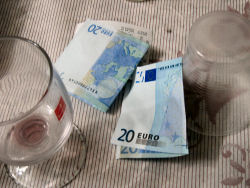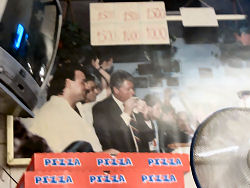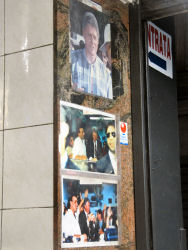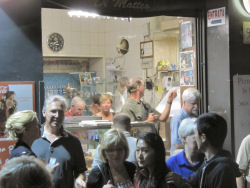I woke up at 5:55, looked at my watch, and went back to sleep. I dreamt that I was in charge of building a fire on the ground for cooking supper for a dozen or more people. After I got the blaze going, I walked around looking for more suitable sticks to add to it. Almost everything that I found was too green. By the time that I returned with a sizable bundle, the fire had gone out, and my dad had brought out a black barbecue grill of indeterminate nature. Inside the grill he was cooking a small pig that really looked more like a piggy bank. It was on its back, and its round feet were sticking up. I got very angry and kicked the whole thing over. Then I was on the Metro. It was very crowded. Near me was Jim Lowe, who, a decade earlier had served for a short time as our company’s sales representative. His friends on the Metro were giving Jim a hard time about making phony deductions on his income tax.
The phone rang at 6:20; all of the above took less than twenty-five minutes. Our wake-up call was a recording of Louis Armstrong’s “What a Wonderful World.” This called to mind my days in basic training in Ft. Polk, LA, in 1970. Whenever I was charged with waking up the rest of the platoon, I used to serenade the troops with an a cappella rendition of “Another Be Good to Mother Day,” which I remembered from Captain Kangaroo. I kept time by beating my entrenching tool against the lid of a metallic trash can. No one ever requested an encore. I took a photo of the framed black and white sketch in our room. It looked like a birds’ nest to me, but Sue insisted that it was actually a basket of fruit. She was right; I later noticed that mounted on the wall in the hallway was a more colorful painting that was labeled “Arance,” which means “Oranges.” I took a photo of that, too.Sue was not ready yet, so I went down to breakfast alone. I sat by myself at first, but when I saw that Frank was also dining alone, I moved over to join him.
After breakfast I was astonished to learn that Bob had attended Rockhurst College in Kansas City! He told me that there was a lot of talk when he was there about the Greenlease kidnapping that had occurred in 1953. The Greenlease family donated a boatload of money to the new building for Rockhurst High School, which I attended from 1962-1966.I asked Bob if he had ever met my cousin John Cernech, who must have been at Rockhurst College at about the same time that he was. He did not remember him.
Bob said that he attended dental college at St. Louis University. I told him that out of high school I had applied to SLU on a Tuesday and had received a letter of acceptance only two days later. I never figured out how that could have been possible.
We brought the luggage down to the lobby at 7:45. We were scheduled to leave at eight. I realized at the last second that I did not have my Mystic Seaport hat with me. I had to hope that it was in the suitcase. If not, it was no great loss.[1] The color of the brim had gradually been transmogrifying from blue to red.
The clerk at the desk that morning wore a nametag with Joseph (not Giuseppe) on it. He was the first black guy whom I could remember seeing in all the time that I had been in Italy who was engaged in any business other than selling knockoffs or knickknacks on the street. This did not seem possible, but I could not recollect a single exception.I shelled out €16.90 for the phone call that Sue had made to Tom on Wednesday evening. We definitely blew our phone budget out of the water on this trip.
On the bus Rainer gave us some background information about our final destination, Naples, or Napoli in Italian. It was founded by the Greeks (Νεαπολις) as a colony long before the time of Romulus and Remus.
The “Spaccanapoli” was the colloquial name of the long straight street in Naples that changed its official name every few blocks. We would spend quite a bit of time on it on our orientation walk after the visit to the art gallery.
The university in Naples was named after Emperor Frederick II, whom Rainer identified as a Norman.[2] He was born in Italy in 1194. He is not a household name in the United States, but Frederick II must certainly rank as one of the most intriguing historical figures ever.
Via Toledo was the home to a large number of stores that sold everything from designer clothes to pizza to musical instruments to creches, for which Naples was famous.
Rainer gave a short disquisition on the slow development of a uniform Italian language. Dante’s Divine Comedy was the first important literary work, and it was written in the Tuscan dialect in the early fourteenth century. It was not until the time of the Risorgimento in the nineteenth century that people on the peninsula finally came to think of themselves as Italians. Even in the twentieth century nearly everyone spoke one of the many regional dialects, some of which hardly even resemble Italian. Mussolini tried to establish the Tuscan dialect as the official state language. Radio and television cemented it.Italians still maintained substantial regional differences in their communication. “Ganzo” was the word for “cool” in the region of Tuscany. In Naples regional words such as “Sfizio” were commonly used even in places that catered to tourists.
The newly remodeled Hotel Chiaja, our home in Naples, could be reached through a very large door that remained open during the business hours of the shops located on a small courtyard within. The big door contained a very small door that could be unlocked by pressing the proper button located on the wall to the left.
Our group’s rooms were all one floor above the courtyard. The elevator could only be used by the staff because it was coin-operated, and the coins that it accepted were no longer minted.
At three o'clock we were scheduled to assemble in the courtyard outside of the hotel for our walking tour of Naples.
Rainer insisted that Pizzeria Di Matteo, which did not even offer commonplace toppings such as pineapple or barbecued chicken, served the best pizza anywhere at the best price. We would have the opportunity to evaluate his claim that very evening. He also introduced us to the concept of “Vera Pizza,” a set of standards instituted by an organization in Naples to identify pizza that was prepared in the traditional Neapolitan manner. The requirements were very precise and demanding.
Whoa, Nelly! A car tried to pass our bus in a construction zone and crashed into the signs that said that the lane was closed. I saw one of the signs fly past the window on the other side of the bus. The bus driver seemed completely unfazed and continued apace.
Rainer warned us that Naples was the one place in Italy where one had to be a little concerned about not just pickpockets, but muggers. He cautioned against flashing one’s Rolex[3] and then related how on one of his tours, someone had bought a fake Rolex on the street. Later two guys had jumped him and stolen it from him while pretending to go after his video camera. Rainer had been equally angry at the criminals and the victim. He used a bad word to describe his feeling. At about ten the bus arrived at the Capodimonte Museum, which is on the far north side of Naples. The grounds were quite nice, and the place seemed to be nearly devoid of visitors. I had imagined that every location in the vicinity of Naples would be bustling with people 24/7.Pina informed us that she had actually been with the German group that Gaetano had reprimanded in Pompei on Tuesday. She seemed bemused by the incident.
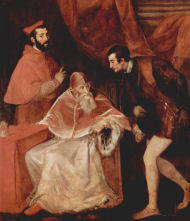
The museum surrounded a large open-air courtyard. In one corner of the courtyard was a small caffeteria.
The pieces on display in the museum constituted the personal collection of King Charles III, who had obtained the majority of them when he married Elisabeth Farnese. Charles had originally intended the building to be a simple hunting lodge, but when he needed a place to house these works, he chose Capodimonte and redesigned it. The pieces had originally been assembled by the Farnese pontiff, Paul III, and his descendants.Pina asserted that Capodimonte’s was the second-best art collection in Italy behind only the Uffizi in Florence. This did not seem right to me. I guess that you could dismiss the Vatican as not technically being in Italy, but I suspect that Cardinal Scipione Borghese would strongly dispute her ranking this museum ahead of his collection in Rome. Rick Steves’s Italy book did not even mention Capodimonte in the twenty-seven pages that the great one devoted to the city of Naples. The Galleria Borghese, by comparison, got a self-guided tour of four pages and two additional mentions.
Capodimonte was built from 1738 to 1758, about the same time as the San Carlo Opera House. I learned that San Carlo was named after St. Charles Boromeo, the Cardinal-nephew of Pope Pius IV. I wondered why they named it after a northerner with no obvious connection to Naples. Maybe he had ties to the Bourbons or the Farneses.Pina started the tour in the room that contained portraits of the Farneses. The first portrait by Titian was already very familiar to me. It depicted the pope with his two grandsons, Alessandro and Ottavio. Pina explained that the Italian word “nipote” means both nephew and grandson. The young men’s father, Pier Luigi, was the pope’s illegitimate son from an affair he had before he became pontiff, but Pope Paul treated the two of them in exactly the same way that other popes had treated their nephews. Alessandro was Cardinal-nephew, an official rank equivalent to Secretary of State, and Ottavio was Duke of Parma after his father died.
I was a little disappointed that Pina did not relate how the pope had collapsed and died after knocking the hat off of Alessandro’s head in a fit of rage.
In the same room was a portrait, also by Titian, of Pier Luigi Farnese. Pina claimed that Charles V was responsible for his assassination. This did not square with anything that I had read. My understanding had always been that he was murdered by the nobles in his fiefdoms because he imposed restrictions on them and made them reside within the city walls. Their plotting was probably supported by the emperor, but the nobles did the deed, not an imperial assassin.
It appeared to me that the Neapolitans had adopted the Farneses as their own, and they held Emperor Charles V and Spaniards in general for many of the problems of southern Italy. The most peculiar aspect of this was that, although Spain was certainly part of his empire, Charles was not much of a Spaniard. He was a Hapsburg, and he was born in Flanders. And he had red hair!Pina skipped over the puzzlingly familiar portrait of Leo X with the two cardinals. I resolved to come back to examine it during our free time after the tour ended.
My notes for the rest of the tour were a little sketchy. To tell the truth, I was more interested in the casual references in some of the paintings to the popes than I was in the artistic qualities that they evinced or the contribution to the development of art.
Pina divulged that the concept of perspective was well known in Plato’s time. Masaccio rediscovered the techniques in the fourteenth century. We stopped for a minute at his Crucifixion. Nearby was a painting of the consecration of Santa Maria Maggiore, the church that I never got a chance to visit in Rome. It featured an unidentified pope. I made a mental note to find out which one.Pina explained that Mantegna’s paintings were full of references to Roman architecture with plenty of columns and arches.She also showed us the stiff Portrait of Luca Pacioli. The guy standing behind him, whom Pina identified as his patron, sure looked familiar. Renowned for his Summa de arithmetica, geometria, proportioni et proportionalità, Luca Pacioli was considered the founder of accounting.
Sebastiano del Piombo painted a portrait of the second Medici pontiff, Clement VII, before the sack of Rome. Pina did not mention the notorious beard that he grew after he became Pope Btfsplk I.
In Titian’s painting of Danaë, Zeus was depicted as a golden shower that could easily be mistaken for a rain of golden coins. There was a message there.El Greco’s portrait of Giulio Clovio and especially his Soflòn show a strong Flemish influence.
Pina told us about the Wundercamera or room of “rare cose.” Evidently its intent was to surprise and shock people with erotic stories depicted on the ceiling.
We saw a pair of very unusual ivory fans. The Cassetta Farnese, festooned with the family crest of a lily, was built to contain the fifth-century Book of Hours.
Bruegel’s depiction of the Parable of the Blind Men was actually pretty funny. His Misanthrope required a little explanation. The aloof title character is a monk who has no interest in other people. While he is not looking, a diminuitive creature is shown stealing his heart-shaped bag. According to Pina, these two paintings were stolen from a French baron. Annibale Carracci was a mannerist. We spent a few minutes studying Hercules at the Crossroads. Herc is beckoned by two ladies, Virtus and Voluptas. Virtus offers him a rough road, but the reward at the end, Pegasus, is substantial. Voluptas offers a much more pleasant path that leads nowhere. Hercules chooses Virtus, but it was obviously a difficult choice for the big guy.We walked through the enormous ballroom with the impressive chandeliers. My most lasting memory of it was that we got to sit down there for a minute or two.
Pina explained how Napoleon’s brother Joseph was sent to govern this part of Italy. She did not mention that he spent the last years of his life in New Jersey, which I find both fascinating and incredible. Napoleon’s sister, Caroline, was queen consort of Naples. We got to see a porcelain of Napoleon’s wife Josephine. Canova made an interesting sculpture of Napoleon’s mother, Letizia, lounging in the manner of Agrippina, Nero’s mother. You can read about Letizia’s life in Rome during the fifteen years following her son’s capture here.Pina did not escort us to the museum’s second floor, but she told us how to find Caravaggio’s Flagellation of Christ, which was positioned at approximately the least convenient place in the entire museum. Almost everyone, even Sue, walked up the stairs to see it during the free time at the end of the tour. It was as striking as most of his later works. What I liked was the fact that one of the guys was picking up the scourge off of the ground. Why? Did he drop it? Was he doing something else that required both hands?
After viewing the Caravaggio I made my way back downstairs to examine the paintings of the popes. The portrait of Leo X was just a copy of the stunning Raphael that we had viewed in the Uffizi eight years earlier. I was pretty sure that the cardinal on the left was Giulio de' Medici, later Pope Clement VII, and I assumed that the one on the right must be Alessandro Farnese. I was wrong; it was Luigi de' Rossi, who is famous for nothing. I wondered why this copy was even in the gallery.Titian painted portraits of Cardinal Bembo, Pier Luigi Farnese, and his supposed nemesis, Emperor Charles V. In all, there were thirty Titians in this gallery!
I determined that the pope in the painting of the consecration of Santa Maria Maggiore was Martin V, the Colonna who was elected by the Council of Constance at the end of the Western Schism.
I spent about five minutes in the bookstore before I determined that there was nothing of interest to me there. If they had sold a book that contained photos of most of the paintings that we saw, I might have bought it. Since they did not, I remained at a loss to explain why in the world they did not allow any kind of photography. I met Sue at the caffeteria. I purchased a bag of chips and a can of rather cold Coca Cola Light. I concluded that very few Europeans drank it yet, but at least they seemed to be realizing that Americans would pay for it and that they liked it cold.Incredibly, this top-notch art gallery was almost completely devoid of patrons for the entire duration of our visit. I understood that some people were afraid of or disgusted by Naples, but this truly defied belief.
After we boarded the bus for the last time, Rainer announced the room assignments in the Hotel Chiaja. Sue and I got room #102. The bus drove to the Piazza del Plebiscito. We jumped off the bus there near the Opera House, which had a set of chains in front of it for no apparent reason other than to impede walking. All the luggage was unloaded from the bus. We had to schlep our bags from Piazza del Plebiscito up around Caffè Gambrinus to Via Chiaia. Then it was another two hundred yards or so up the street until we reached the massive doorway to the courtyard of the building that housed the hotel. A bald guy in a maroon jacket met us on Via Chiaia and helped Renee and someone else with their bags.We stacked the luggage in the courtyard, and porters in maroon jackets brought it up to the main (only) floor of the the hotel. The staff used the elevator to bring up the luggage.
I went up the wide staircase to the reception area and got the key for 102. Then I called down to Sue, who was still in the courtyard. She said that she would come up when she had summoned enough energy. Our room and room 101 were down a small corridor near the reception desk. The room was a little small but otherwise very nice. The bathroom was much larger than I expected. As usual there was a bidet. The only place on our European travels that we saw very few bidets was in France. Go figure. My baseball cap was indeed in my suitcase. For some reason it was a great relief to me to know that I still had it. I harbored no great love for it, but I hated feeling incompetent about being able to keep track of my things. You are supposed to acquire this skill in kindergarten.I took a little nap. We were scheduled to meet at 3:00. When I awoke a few minutes before the departure time, I once again could not find my hat. It was almost impossible to believe that I could have lost it in such a confined space in such a short period of time. At any rate I went on the Spaccanapoli walk bareheaded.
I was a little surprised that Sue joined us. This was advertised as a long walk, and Sue generally has opted out of all of the orientation strolls. The reward at the end of this one, however, was allegedly the world’s best pizza. She explained that she would go as far as she could and then maybe take a cab.
We started in the Piazza del Plebiscito, which was named after the election of 1861 in which the citizenry of Naples voted to join the Italian Republic. Evidently there were piles of garbage here until very recently. They cleaned up the square for the big celebration of the “unification” of Italy. This concept seemed a little forced to me. It took nine more years for the Savoys and the Republicans to conquer Rome and the other papal holdings. I always have thought of 1870 as Italy’s birth year, not 1861. I suspected that the celebrations in 2020 would be more substantial, assuming that the Mayans were wrong.We went through the Galleria Umberto I, which was almost a dead ringer for the Galleria Vittorio Emanuele II in Milan. Rainer informed us that it was built to give the rich people a place to hang out in public without having to rub shoulders with the unwashed masses.
Rainer explained that the garbage crisis was totally due to corruption in the government. The landfills were all full, and there was rampant real estate speculation over the surrounding areas, which would become more valuable when they converted the landfills to other uses. Recently the government relaxed the restrictions on the burning of waste. In addition, some refuse was being exported to Germany. That the Italians were paying the Germans to dispose of their trash boggled my mind. Our walk brought us to the end of the Spanish Quarter and to the beginning of what Rainer termed the Fascist Quarter – an area dominated by blocky-looking edifices for government and big business. The banks had armed policemen outside wearing bullet-proof vests.We stopped at the church of Sant’Anna dei Lombardi. The church itself apparently featured quite a few items of interest, but Rainer swiftly directed us back to its hidden jewel, an ornate chapel called the Sacrestia Vecchia that had been wondrously decorated by Giorgio Vasari in 1545. The detail was absolutely astounding. The frescoes contained an incredible number of different plants, and the walls were richly decorated with wooden inlays by Fra Giovanni da Verona.
What a great metaphor for Naples this church was. The surroundings were dumpy, the façade was plain, and most of the interior was nice but not extraordinary. However, if you persisted to the farthest point, it took your breath away. If only they allowed photos.
I asked Rainer who St. Ann of the Lombards was. He directed me to a sign near the entrance to the church. I learned that there was no such person. The church was dedicated to the well known St. Ann, Mary’s mother. The rest of the name refers to some group that either was composed of Lombards or came from Lombardy.
Vasari is best known as a meticulous art historian, but he also decorated the famous corridor that connects the Palazzo Uffizi with the Palazzo Pitti in Florence.
No photos were allowed in the church, but I found a few on the Internet.Next we walked up to the church called Gesù Nuovo, which was built by the Jesuits. It had a weird fortress-like exterior that belied its elaborate baroque interior. Much of the right side of the church was dedicated to its star attraction, Dr. Giuseppe Moscati, who died at the age of 47 in 1927 and was canonized by John Paul II sixty years later. They should have made a movie about him;[4] Marcello Mastroianni would have been perfect, but at this point he is a little too dead.
The area devoted to the saintly doctor featured two of the biggest attractions of the church: the piece of munition that fell through the roof of the church during World War II and the massive collection of “ex votos,” small silver plaques that had been donated by devout followers of the saint who attributed miraculous cures of various ailments to the saint’s intervention. Nearby was a Gothic church that had been destroyed in World War II. It was rebuilt by students of the University of Frederick II. We were allowed enough time to visit it during the break, but I stayed in the piazza and observed the people.Quite a few taxis were parked in the Piazza del Gesù. I expected Sue to take one, but I was mistaken. She decided to persevere through the rest of the walk.
An extremely loud jet roared by. It was definitely military, not civilian. Its presence seemed utterly discordant with the setting. At least it did not bomb any Neapolitan churches.
Piazza San Domenico Maggiore featured an obelisk that had Pope Pius V’s name engraved on it. He was the only pope who reigned between 1300 and 1900 who has been canonized as a saint. His saintliness did not stop him from conspiring with Catherine de’ Medici to wipe out the Huguenots in France.[6] The British claimed that he also tried to assassinate their queen.
Before Rainer brought us to his favorite spot in Naples, he told us about Raimondo di Sangro, an eighteenth-century jack of all trades – a Freemason, a soldier, an inventor, an alchemist, and many other things. He commissioned various artists to decorate the Sansevero Chapel according to his design.
No photography was allowed in the chapel, not even of the statues or the contraptions in the basement. I did find some photos on the Internet.
Rainer asked us to concentrate on three statues, which were made from some kind of limestone-marble combination. The first one was called Pudicizia, which roughly translates as Chastity, and it depicted the quality as a veiled (though not exactly modest) woman. The second one was Disinganno, Disenchantment, which had amazingly detailed work especially in the nets. Rainer’s favorite was The Veiled Christ, which was displayed in the middle of the chapel. He showed us how to read it. I could see what he was talking about readily enough, but it did not knock me out. OK, I admit to being a Philistine.
We descended to the basement of the chapel and saw two life-size depictions of organs and nerves or blood vessels or something – a man and a pregnant woman. We were warned that we might find it objectionable. I did not think that it was particularly creepy, but I also did not see how anyone could have thought that they were real people.
I went out the front door, but it was locked. I could not figure out how to get out or come back in from the vestibule. Fortunately, one of the lady attendants rescued me. We had to use a different exit. Rainer told us that the employees of the museum were very happy because they got to go home fifteen minutes early.Mark asked Rainer about a placard on one of the nearby walls. It was a death notice. Evidently this was the way that the Neapolitans announced the passing of a relative.
We then walked the short distance to Di Matteo’s for pizza. The group clambered up to the dining area on the second floor. Sue and I shared a table in the corner with the Bradleys. It was so crowded that I could only fit one leg beneath the table. I had a Margherita pizza with prosciutto and DAB beer. Sue had a white pizza with prosciutto and arugula and a small beer. Diann had the Bufalana pizza, which featured real mozzarella, and red wine. Ed ordered the Margherita with mushrooms and beer. They all had limoncello afterwards.
I thought that the pizza was exceptionally good. Rainer’s taste in restaurants seemed like a close match with mine.
Among other things I learned that Diann’s camera was just like mine, a Canon SX200 IS. I took three thousand photos with mine on this tour; I wonder how many she took.
A sign on the wall advertising DAB beer claimed that it was “nuda e cruda.” Nobody seemed to know what this meant. I later discovered in my dictionary that La verità nuda e cruda. means “the plain truth.” So, I think that the advertisement meant to say that DAB was just plain beer, with no embellishments.
Bill Clinton interrupted his visit to Naples during the middle of the G7 conference in 1994 to stop in for some pizza at DiMatteo’s. Evidently this unscheduled event caused his security detail a lot of grief. Black helicopters hovered overhead while the prez chowed down on his vera pizza.After supper Sue took a cab back to the hotel by herself. Everyone else walked. At first the Zieves were going to go with her, but they changed their minds. Rainer suggested that I accompany her. I agreed to go along, but she insisted that she would be OK.
During most of the long walk back I was by myself. I seemed to melt into Naples, and it was a pleasant feeling. I liked this city. There were probably dangerous parts of it, but I doubted that it was any worse than American cities. It was certainly not as scary as the many downtowns in the United States that turn into creepy ghost towns at six o'clock in the evening.
The shower in our hotel room was wonderful. A basketball player must have been the previous resident of this room. I almost always need to adjust the showerhead up, but this time I actually had to aim it down a little.Sue, who barely beat me back to the hotel, went into the lobby to use the Internet. It was obvious to her that I would not be able to stay awake very long. She had to leave the key card in the box that activated the electricity. Fearing that she would not be able to awaken me, she left the door ajar. I produced the requisite riddle about doors and jars.
The notion of using the key card both to open the door and to regulate the electricity was annoying. It probably saved the hotel a little bit on electricity, but it meant that you could not recharge your batteries unless you were in the room. In addition, if one occupant wanted to leave and the other to stay in the room, the person in the room needed the key card. If that person then wanted to leave, he/she needed to leave the card at the desk, and the other person had to figure this out. If the person in the room went to sleep, the other person must bang on the door to get in. As I explained earlier, it generally takes a lot of banging to rouse me.
Never mind. They gave Sue a second key.
[1] I accidentally left it in the airport in Charlotte, NC, on November 9, 2011.
[2] His grandfather was Count Roger II, the son of the great Norman conqueror. I reckon that Frederick was actually one-eighth Norman. His other grandfather was Emperor Frederick Barbarosa.

